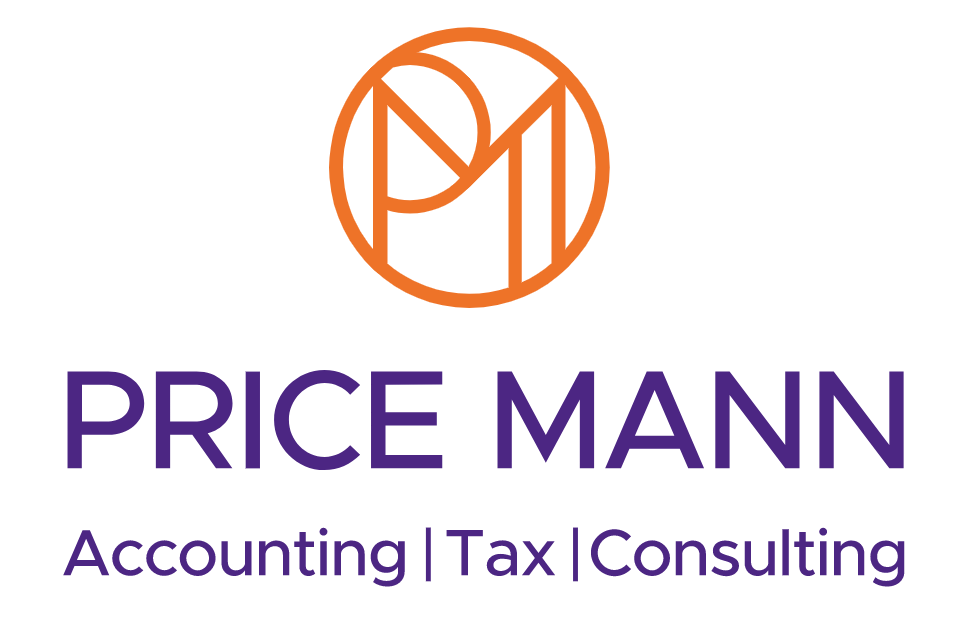Sustainable business practices
Sustainable business practices
The financial incentives for going green.
Greener operations can help control costs and reduce risk. Many organisations are upgrading fleets, equipment and buildings to cut energy use and improve resilience. Official figures show UK greenhouse gas emissions fell by around 4% in 2024, reflecting ongoing shifts in how we power and heat our economy. For smaller firms, practical efficiency steps can trim energy bills by 18-25%, which strengthens cashflow and shortens the payback on upgrades.
This guide outlines the tax reliefs, grants and rules that apply in 2025/26. It focuses on how incentives can support investments such as electric vehicles and charging, on-site renewables, energy-saving plant and machinery, and qualifying research and development (R&D). You’ll find clear thresholds and dates so you can plan projects with confidence, plus links to official sources for verification.
Why this matters for your bottom line
- Tax reliefs and incentives now cover a wide range of plant, vehicles and property improvements. Used well, they can accelerate payback and improve cashflow. The annual investment allowance (AIA) is permanently set at £1m, covering most plant and machinery purchases, new or second-hand.
- Full expensing for companies gives a 100% first-year deduction on qualifying new main-rate plant and machinery, plus a 50% first-year allowance for special-rate assets. This regime has been made permanent. Cars are excluded.
- Targeted incentives support low-emission fleets, workplace charging, energy-saving installations in residential and charity buildings, and on-site renewables that may be exempt from business rates.
The sections below explain each area, what you can claim and where to find the rules.
Capital allowances and full expensing
Annual investment allowance (AIA)
- What it is: 100% deduction on qualifying plant and machinery up to £1m per business per accounting period. Applies to most assets except cars. Available to companies and unincorporated businesses.
- Use case: Lighting upgrades, compressors, computer numerical control (CNC) machines, racking, IT equipment, certain heat pumps in commercial premises (as plant) and so on.
Tip:
If your spend will exceed £1m, combine AIA with full expensing (applies to companies only, and only for the purchase of new assets) or standard writing-down allowances.
Full expensing and first-year allowances
- Full expensing (companies only): 100% first-year deduction for new main-rate plant and machinery. 50% FYA for new special-rate assets (e.g. integral features). Permanent policy. Cars are excluded.
- Zero-emission cars and charge-points: The government extended the 100% first-year allowance (FYA) for zero-emission cars and electric vehicle (EV) charge-points for expenditure on or after 1 April 2025, now ending 31 March 2026 (corporation tax)/5 April 2026 (income tax). If you plan to buy an electric car or install charge-points, timing matters.
Structures and buildings allowance (SBA)
- Rate: Straight-line 3% per year over 33⅓ years on qualifying non-residential construction or renovation. Enhanced 10% rate applies in designated Investment Zone special tax sites while available.
Planning notes
- Second-hand assets qualify for AIA and writing-down allowances but not full expensing.
- At the time of writing, full expensing does not generally apply to assets for leasing (with limited exceptions). Check contract terms before committing.
Fleets, company cars and charging
Benefit in kind (BiK) for electric cars (2025/26)
- BiK rate is 3% for zero-emission cars in 2025/26, rising by 1 percentage point per year (announced policy) in later years.
- Low BiK keeps salary sacrifice EV schemes and company-car provision
attractive relative to petrol/diesel.
Vehicle excise duty (VED) changes from 1 April 2025
- New EVs registered on or after 1 April 2025: £10 first-year rate, then standard rate £195 from year two.
- EVs registered 1 April 2017 to 31 March 2025: Standard rate £195.
- Expensive car supplement: EVs over £40,000 now pay a supplement each year for five years (amount set in VED tables). Check current VED schedules for your vehicle.
Advisory electricity rate (AER) for EV mileage claims
From 1 September 2025, HMRC split the AER into:
- 8p per mile for home charging
- 14p per mile for public charging
Employers can pay more if you can show a higher cost per mile.
First-year allowances for EV assets
100% FYA for zero-emission cars and EV charge-points runs until 31 March 2026 (corporation tax)/5 April 2026 (income tax) for expenditure incurred on or after 1 April 2025. If you intend to buy new, this window may be valuable.
Grants for workplace charge-points
The Workplace Charging Scheme (WCS) covers up to 75% of costs, capped at £350 per socket, up to 40 sockets per applicant across all sites. Eligibility includes businesses, charities and public sector bodies.
Action list for fleets
- Refresh your car policy and salary sacrifice brochures with 3% BiK for EVs in 2025/26.
- Review the VED impact for new deliveries after 1 April 2025, including the expensive car supplement where relevant.
- Update expense and payroll systems to apply the 8p/14p AER split from 1 September 2025.
- If you plan to install charge-points, consider claiming WCS and align orders to secure the 100% FYA window that runs to spring 2026.
VAT reliefs for energy-saving installations (residential and charity buildings)
If you install certain energy-saving materials (ESMs) in residential properties or charitable buildings, the VAT rate is 0% until 31 March 2027. The scope includes solar panels, heat pumps, insulation and, from 2024, some groundworks for heat pumps and certain batteries/smart diverters. The rate then reverts to 5% under current law. This can support employee accommodation, landlord-owned housing or charity projects in your group. Check notice 708/6 for the full list and conditions.
Note: This relief does not generally apply to commercial premises; most businesses pay the standard 20% VAT on energy and on commercial energy-saving works (subject to specific reduced-rate rules for low usage and charities).
Business rates: Reliefs for green investment
- On-site renewables and storage: Eligible plant and machinery used in on-site renewable energy generation and storage (including rooftop solar, wind turbines, battery storage and storage used with EV charging) is exempt from business rates in England from April 2022 until 31 March 2035.
- Heat networks: 100% relief for eligible low-carbon heat networks with their own rates bill, available to 2035.
- Improvement relief (from 1 April 2024): Where qualifying improvements increase your rateable value, you can get 12 months of relief from the higher bill once works are complete (certificate required).
Practical point: Installing rooftop solar for self-consumption is a common use case for the exemption. Confirm design and metering with your surveyor so that the correct elements are treated as exempt plant.
Grants and schemes for buildings
- Boiler upgrade scheme (BUS): Provides upfront grants (administered by installers, maximum £7500) for heat pumps and eligible biomass boilers in homes and small/medium non-domestic buildings in England and Wales. If you own qualifying non-domestic properties (up to 45kWth per system), you may be eligible.
- Industrial Energy Transformation Fund (IETF): This closed in July 2025. The planned second Phase 3 competition window will not go ahead, and there is no successor fund currently. Factor this into project plans if you were banking on grant support.
R&D tax relief and Patent Box for low-carbon innovation
R&D: Merged scheme and ERIS (from periods beginning on/after 1 April 2024)
- The UK now operates a merged R&D expenditure credit scheme (RDEC-style) at a headline 20% credit rate. The credit is taxable as trading income.
- Enhanced R&D intensive support (ERIS): For loss-making SMEs with R&D intensity of 30% or more (reduced from 40%), an 86% additional deduction plus a 14.5% payable credit on surrendered losses is available. A one-year grace period can protect eligibility if you dip below 30% after qualifying.
Where this helps: Process optimisation, electrification, novel storage, low-carbon materials, control systems and software often contain qualifying R&D. Good record-keeping and technical narratives are vital under current HMRC scrutiny. For businesses with qualifying intellectual property (IP) and sustained innovation, consider Patent Box alongside R&D.
Patent Box
- The Patent Box applies a 10% effective corporation tax rate to profits attributable to qualifying patents and specific IP. This remains available and can materially reduce tax on commercialised clean-tech.
Plastic packaging tax (PPT)
- PPT applies to plastic packaging manufactured in or imported into the UK that contains less than 30% recycled plastic.
- The rate from 1 April 2025 is £223.69 per tonne (up from £217.85 in 2024/25). Review supply chains and specifications to manage exposure.
UK Emissions Trading Scheme (UK ETS) and energy-intensive users
- If your site falls under the UK ETS, keep track of annual cap changes and pricing. Technical guidance was updated in August 2025; the 2025 cap is published by external trackers at 86.7 MtCO₂e. Recent official analysis notes a UK carbon price around £50/tonne at the end of May 2025 (lower than the EU ETS at the time). Policy work on linking the UK and EU systems is ongoing.
- The government has also signalled measures to support energy-intensive industries through levy reductions and network charge discounts under wider industrial strategy workstreams. Keep an eye on sector guidance as eligibility and timing can change.
Common questions
Do leased assets qualify for full expensing?
Not generally. The regime is designed for companies buying new assets to use in their trade, not to lease out (with limited exceptions, such as background plant in buildings). If you’re unsure how your contract is structured, seek advice before ordering.
Can I claim both ERIS and the merged R&D credit on the same expenditure?
No. You can choose to claim under the merged scheme or, if eligible, ERIS on the same spend, but not both.
Are EVs still tax-efficient after VED changes?
For company cars, the low BiK remains a strong incentive even with VED applying from April 2025. For owned vehicles, budget for £10 in year one then £195 from year two and the expensive car supplement where the list price is over £40,000.
Can I get VAT relief on energy-saving works in my office or factory?
General commercial energy-saving works are standard-rated for VAT, but input VAT may be recoverable if they relate to taxable business activities. The 0% VAT relief applies to residential properties and charitable buildings for specified technologies to 31 March 2027.
Closing thoughts
Sustainability projects work best when the numbers stack up, and the incentives set out here can help pay for upgrades faster. These reliefs can improve cashflow, shorten payback periods and support long-term planning for fleets, buildings and processes. Because schemes and rates can change, check the latest guidance before placing orders or finalising contracts, mainly where deadlines or phased rates apply. Good records, clear scopes of work and the right contract structures will make claims smoother.
Talk to us about your sustainability goals. We are here to help and advise.













